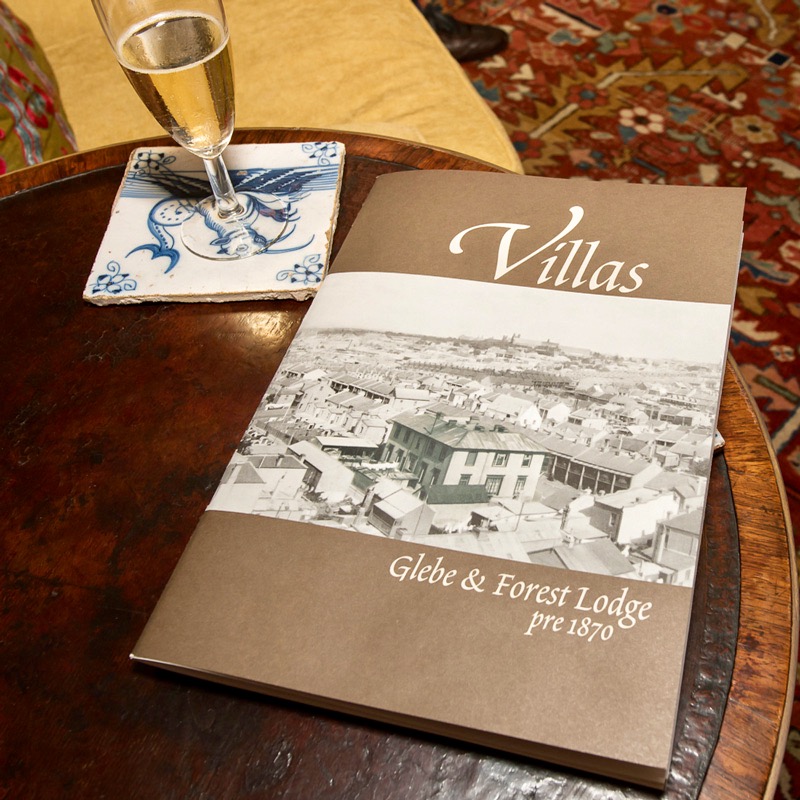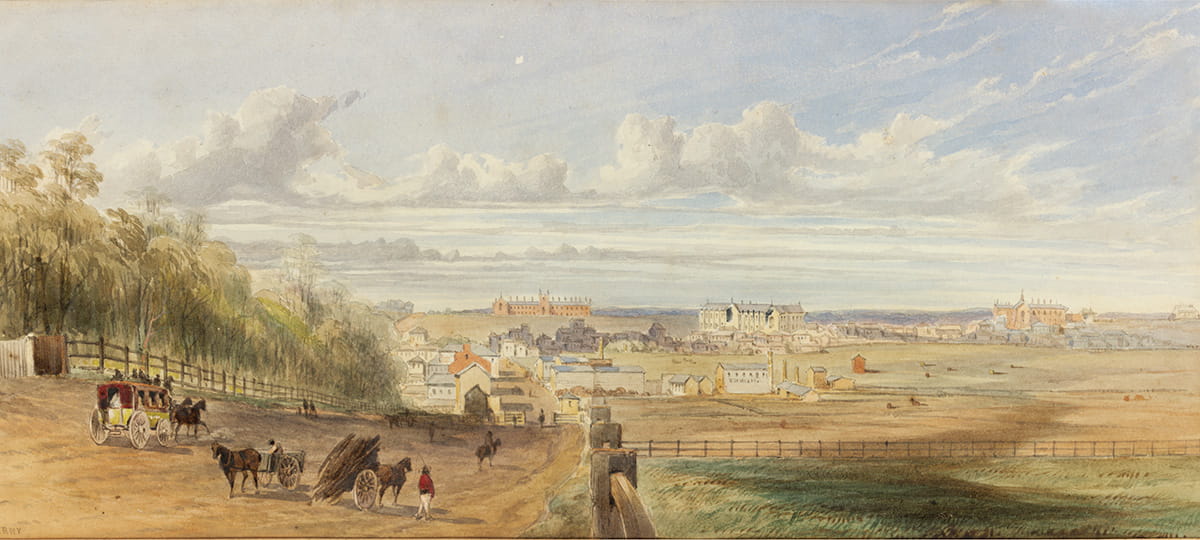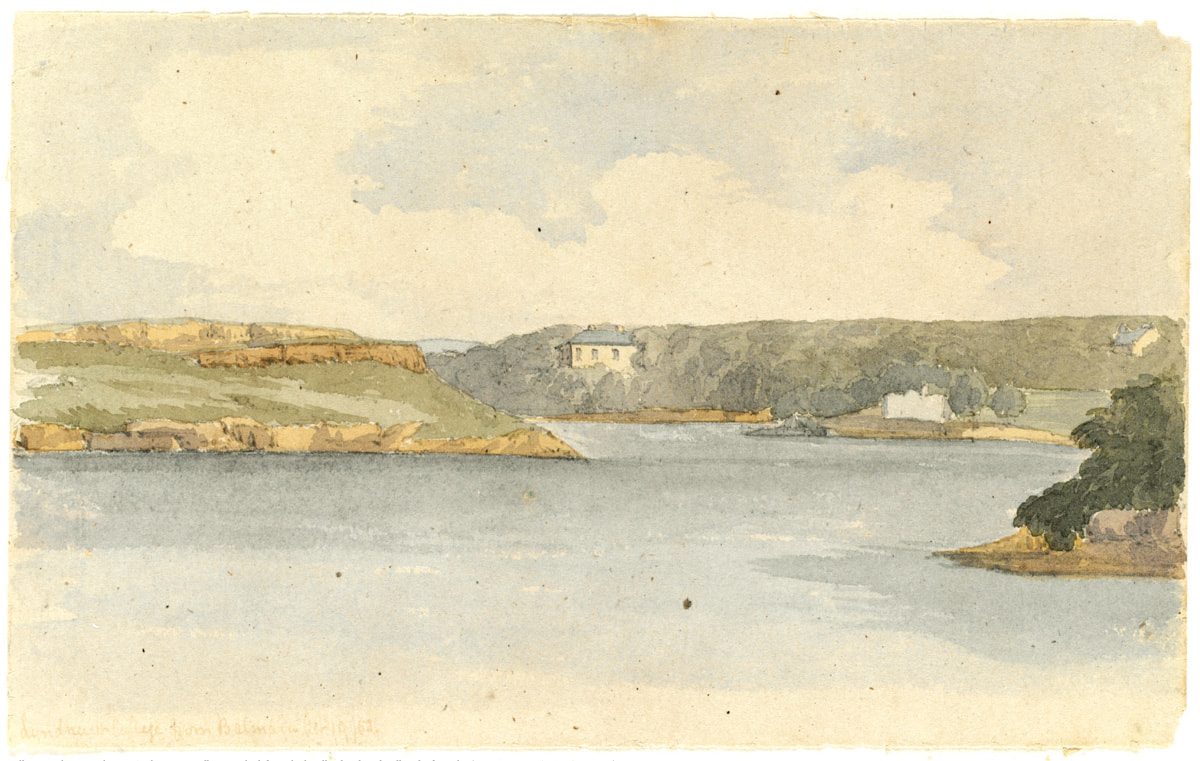The name of the suburb dates back to Middle English, “glebe” meaning Church-owned land lent to a clergyman to provide him with a farming income.
 In 1790 Governor Phillip granted Richard Johnson, chaplain with the First Fleet, an area “full of large green trees” south and west of Blackwattle Creek. But Johnson was not assigned enough convicts to clear it and abandoned interest in the “400 acres for which I would not give 400 pence”. The Glebe remained untouched until 1828 when the Church and School Corporation, financially crippled, decided to subdivide and sell. With easy access to the city, the lots sold quickly.
In 1790 Governor Phillip granted Richard Johnson, chaplain with the First Fleet, an area “full of large green trees” south and west of Blackwattle Creek. But Johnson was not assigned enough convicts to clear it and abandoned interest in the “400 acres for which I would not give 400 pence”. The Glebe remained untouched until 1828 when the Church and School Corporation, financially crippled, decided to subdivide and sell. With easy access to the city, the lots sold quickly.
The first residences were built along a track following the ridge from Parramatta Road to Glebe Point. In their elegant villas and “pleasure gardens” Glebe’s well-to-do imitated the lifestyle of the English gentry. On high ground, removed from increasing odours as pristine Blackwattle Creek turned into a noxious swamp, they had the benefit of views, breezes and natural drainage. Towards the Point, homes were built closer to the shoreline. Their owners enjoyed sea bathing until run-off from the Glebe Island Abattoirs attracted schools of sharks into Johnston’s Bay.
By the early 1840s prolonged drought and inflationary speculation in land resulted in a severe economic depression. Bankrupted were Lyndhurst’s Dr James Bowman, Hereford House’s William Hirst and shipping tycoon Alexander Spark who owned the whole of the Glebe Point harbour frontage. Spark was forced to auction all of his Glebe land including the “Marine Village of Eglintoun”, subdivided into 31 lots. William Dumaresq’s Boissier Estate was likewise divided and sold to ease his financial woes.
Over the next 20 years Glebe lost much of its rural character. By 1861, with nearly 4000 residents, the suburb had its own municipal council, post office and two churches. The larger houses were usually owner-built, using designs taken directly from English pattern books. Local carpenters, bricklayers and plasterers worked with timber felled onsite and stone quarried onsite or from Pyrmont, and handmade bricks.
The most crowded years in Glebe’s development were 1871-91 when the number of dwellings tripled. Much of the increase was due to the progressive subdivision of the Lyndhurst and Toxteth Park estates. Local bankruptcies followed the economic depression of the 1890s.
By the turn of the 20th century the big estates had lost most of their grounds. Also lost were the workers – housemaids, cooks, laundresses, gardeners and grooms – needed to run them. What to do about “the servant problem” was a constant topic of polite conversation. As old established families moved to less crowded outer suburbs, many of the villas were converted to private hospitals, hotels, boarding houses, child welfare institutions and similar organisations. Some succumbed to the developer’s hammer to be replaced by blocks of featureless flats, but others were saved from destruction by resident action groups.
Big and bold did not necessarily equate with beautiful. Many of Glebe’s modest well proportioned buildings were originally described as villas.

Grose Farm from the Toll Gate, Parramatta Road and Johnston Street looking back towards The University of Sydney and Forest Lodge in the distance to the left. Watercolour F C Terry 1862 – 1869 ML315

William Leigh watercolour 1853 showing Lyndhurst to the left on the headland and Rothwell Lodge far right. (ML/SLNSW1853 FL1148480-40).
The printed catalogue accompanied the June 2019 exhibition Villas of Glebe & Forest Lodge pre 1870 and is not for commercial sale.
Prepared by Lyn Collingwood, Peter Crawshaw and Robert Hannan (members of the Glebe Society Heritage Subcommittee), it was produced with financial assistance from the Glebe Society, a Community Grant from the City of Sydney, and private donations.
Assistance in accessing the collections of the City of Sydney, Mitchell Library/State Library NSW (ML/SLNSW), University of Sydney Archives, National Library of Australia, State Library Victoria, NSW State Archives, Antique Print Room Ultimo, Douglas Stewart Fine Art Melbourne, Anglican Church Diocese Archives, and the Glebe Society Archives is acknowledged. Every effort has been made to ensure that credits comply with information supplied.

